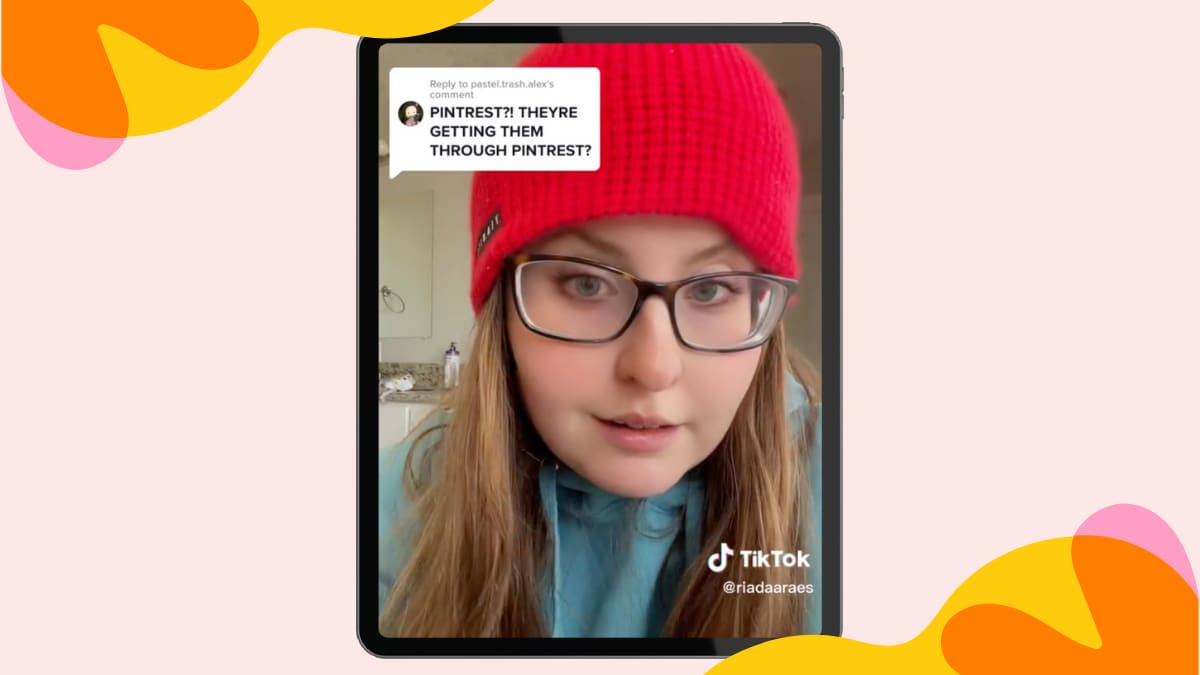Navigating the dangers of social media is difficult even for adults, so when kids finally get old enough to make their own accounts, parents have their work cut out for them. That’s a part of the reason why Seara Adair, a mom and advocate against childhood sexual abuse, limits what her kids are allowed to do on the internet. But, as she recently revealed to her TikTok followers, there are dangers for kids on social media that can get past even the watchful eyes of their parents. Now, she’s warning others after she says a stranger tried to “groom” her young daughter via private messages on Pinterest.
How private messages are a tool for online abuse
Adair’s 12-year-old is restricted from using social media, but has been allowed on Pinterest with parental controls and monitoring in place. Recently, Adair got an email stating that someone was attempting to send her daughter a message on Pinterest, and neither of them knew who the person was.
“The profile appeared to be a 14-year-old girl,” Adair says. “I took a look at the profile, and then I messaged back on her account … and said, ‘Hey, do I know you?’ They said no. Obviously, I talk about this [child safety] a lot. I know what this is. This is not another kid.”
The mom followed her gut feeling about the stranger and decided to keep talking and trying to figure out what they wanted. Immediately, she says, they began sharing personal information about themselves and asking for her daughter’s age and location, which she considers “red flag number one.”
“Then, they pulled the next red flag, which is to try and move this conversation off of Pinterest to Instagram,” she continues. “When I said I didn’t have an Instagram, they said, ‘Well, what about What’s App?’ On Pinterest, you cannot send pictures. All you can send are pins. On Instagram and What’s App, you can send pictures. This is a common tactic to get the child off of the original platform to a place where they can eventually send pictures.”
Adair thought the stranger’s goal was to eventually exchange inappropriate messages and photos with her daughter, and her intuition proved to be correct: the very next day, they sent a link to a TikTok video of two people cuddling and kissing with the message, “I wish this was us.”
What is grooming?
Adair is known as a TikTok “watchdog,” one of the app’s users who calls attention to potential dangers kids and teens may face not only on the platform, but on other social media apps as well. Last year, she received national attention after revealing that she is a victim of childhood sexual abuse and that is part of the reason why she is so knowledgable on the subject and why her advocacy is so important to her. In a follow-up to her original post, she explains how the messages sent to her daughter’s account constitute “textbook grooming tactics.”
“All of these little seeds that they’re planting are just trying to sow a comfortability using discussions around sexuality, girlfriends and boyfriends, dating [and] trying to bond with the minor over parents,” she says. “And they’re doing this because they’re trying to get me comfortable enough with them where they could eventually start discussing things like dating me or getting closer to me, the ‘minor.'”
The Rape, Abuse, and Incest National Network defines grooming as “manipulative behaviors that an abuser uses to gain access to a potential victim, coerce them to agree to the abuse and reduce the risk of being caught.” This can include things like:
- Isolating potential victims from family and friends.
- Getting victims to keep secrets.
- Desensitization to inappropriate sexual topics, such as pornography.
The National Center for Missing and Exploited Children also lists many of the things that happened in Adair’s Pinterest messages as signs of online grooming and exploitation, including:
- Being asked to move the conversation to another platform.
- Exchanging images, especially inappropriate ones.
- Trying to develop a bond by discussing personal topics.
The bottom line on preventing online abuse
Adair’s video was shocking to parents, not only because some of them were unfamiliar with the tactics online abusers use, but also because they had no idea kids might be targeted on platforms like Pinterest.
“I’m going to show this to my daughter,” one person wrote. “She has a lot of online accounts, and I think I monitor, but I don’t know if I do it as well as I should.”
“When I was younger, I was groomed through a lyric sharing website,” another person adds. “They will try anywhere. It’s so scary!”
Even for parents who are well aware of the risks of letting kids use social media, there are always new dangers you may not be aware of. Adair’s video is a vital reminder not only to keep an eye on what kids do online, but also to have important (and frequent!) conversations with them about the things they may encounter.



